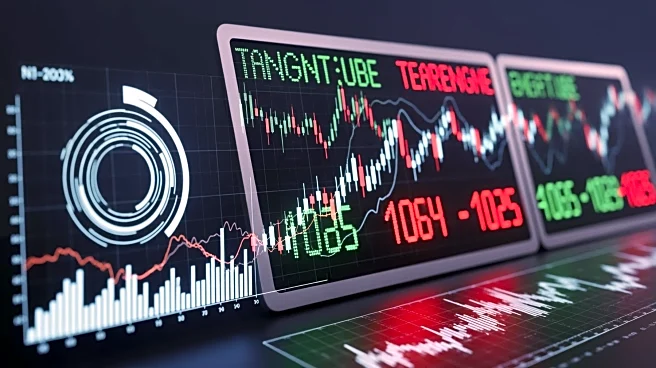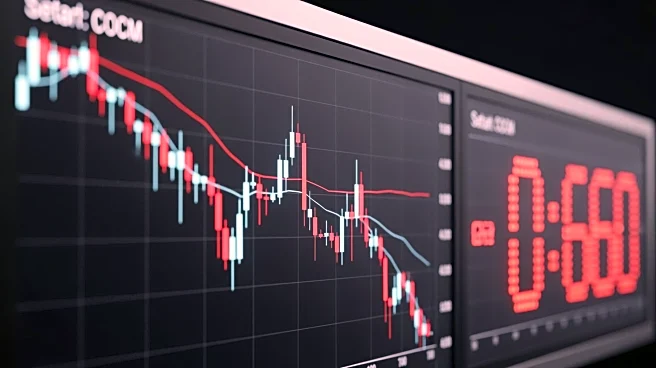What's Happening?
The U.S. stock market has recently experienced a pullback, marking a pause in a rally that had driven stocks to record highs. Investors view this decline as a normal pause rather than a deeper unraveling.
The volatility is attributed to profit-taking rather than a fundamental shift in market outlook. The S&P 500 has fallen 2.4% over the last eight sessions due to concerns over the state of the U.S. economy and elevated valuations in artificial intelligence and technology sectors. Despite these jitters, the bull market is supported by strong economic underpinnings, including the Federal Reserve's easing of financial conditions and an AI-driven boom in capital expenditures.
Why It's Important?
The recent volatility in the stock market highlights the ongoing concerns about the U.S. economy and the sustainability of high valuations in key sectors like technology and artificial intelligence. While the market pullback is seen as a normal correction, it underscores the potential risks of overreacting to short-term market movements. Investors are encouraged to view this as a buying opportunity, given the strong economic fundamentals and growth prospects. However, the situation remains fluid, and any negative news on the economy could exacerbate market fears, potentially leading to further selloffs.
What's Next?
Investors and market analysts are closely monitoring economic indicators and corporate earnings reports to assess the potential for further volatility. The Federal Reserve's policy decisions and any new data on economic growth will be critical in shaping market sentiment. As the U.S. government shutdown continues, the lack of fresh official economic data may lead to increased reliance on unofficial reports, raising the risk of overreaction. The upcoming quarters may see increased volatility, but many investors view this as an opportunity to capitalize on market dips.
Beyond the Headlines
The current market dynamics reflect broader concerns about the concentration of market gains in a few sectors, particularly technology and AI. This concentration raises questions about the sustainability of the bull market and the potential for a more diversified growth pattern. Additionally, the ongoing government shutdown adds another layer of uncertainty, affecting investor confidence and economic stability. The long-term implications of these developments could lead to shifts in investment strategies and a reevaluation of risk tolerance among market participants.












